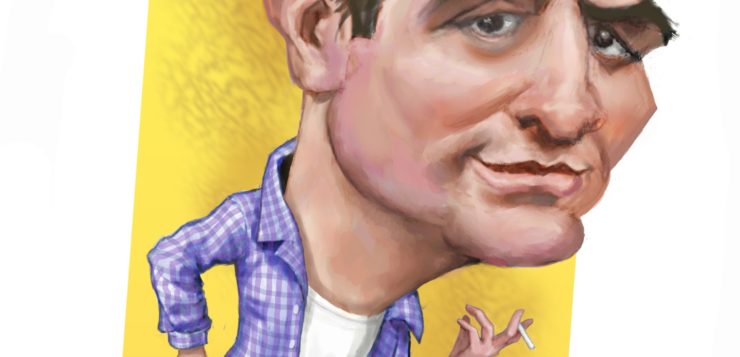AS JACK KEROUAC’S centennial year draws to a close, I have been contemplating the open book of his sexuality. He married three times, had countless affairs with women, and was not above crude expressions of homophobia. However, he allied himself with his gay friends Allen Ginsberg and William S. Burroughs in the creation of the Beat Movement, and, according to Ginsberg, there were times when Kerouac had sex with him or other men. Kerouac didn’t hide his strong feelings for Neal Cassady, fictionalized as Dean Moriarty in On the Road; nor did he mind admitting in Doctor Sax and Maggie Cassidy to a youthful crush on another boy. Given that he was writing and publishing during an era when the admission of such feelings rarely appeared in mainstream literature, Kerouac deserves credit for his sexual candor.
A native of Lowell, Mass., Jean-Louis Lebris de Kerouac (1922–1969) was the youngest of three children born to Leo and Gabrielle Kerouac, a working-class couple with French-Canadian roots. The Kerouacs’ oldest child, Gerard, died at age nine of rheumatic fever when Jack was four. It was a signal trauma in the future author’s life and—along with his Roman Catholic mysticism—accounts for the strains of sorrow and morbidity that run through his books. Those same strains show up when his fictional personas attempt to have serious relationships with women. Sometimes their discomfort shades into appalling misogyny, as in this passage from Visions of Gerard (1958): “Praise a woman’s legs, her golden thighs only produce black nights of death, face it—Sin is sin and there’s no erasing it—We are spiders. We sting one another.” Kerouac’s association of hetero sex with death may have made it easier for him to justify his occasional forays into homosexuality, even though he shared many of the anti-gay prejudices common in mid-20th-century America.
In Doctor Sax (1959), a darkly whimsical novel about his early years written in the free-flowing style he called “spontaneous prose,” Jackie Duluoz’ retrospective descriptions of himself indicate that he had a queer childhood full of fear, fantasy, and wide-ranging passions. At one point, he confesses his love for a schoolmate:
I was in love with Ernie Malo, it was a real love affair at eleven—I tiptoed on his fence heartbreakingly across the street from school—I hurt him once with my foot on the fence, it was like hurting an angel, at Gerard’s picture I said my prayers and prayed for Ernie’s love. … Ernie was very beautiful to my eyes—it was before I began to distinguish between the sexes—as noble and beautiful as a young nun—yet he was a little boy, tremendously grown up (he became a sour Yankee with dreams of small editorships in Vermont).
Hilary Holladay is the author of Herbert Huncke: The Times Square Hustler Who Inspired Jack Kerouac and the Beat Generation and co-editor of What’s Your Road, Man? Critical Essays on Jack Kerouac’s On the Road.








